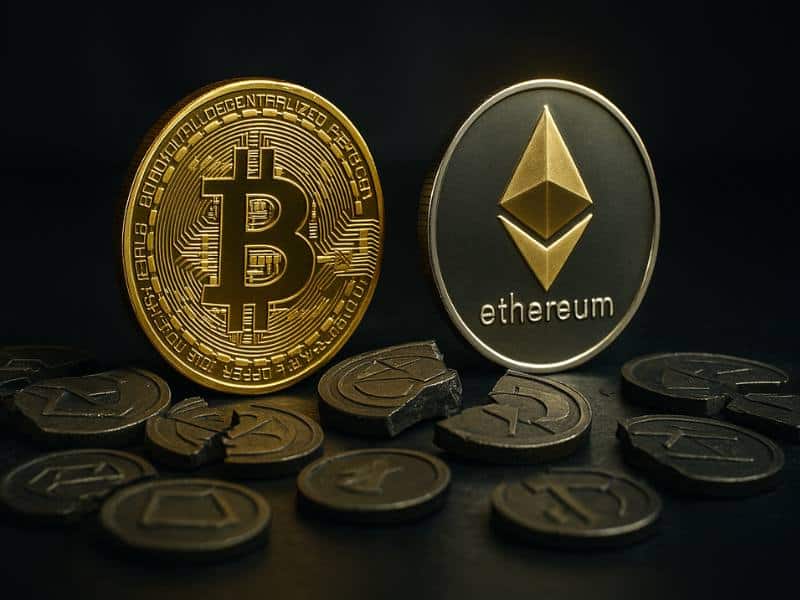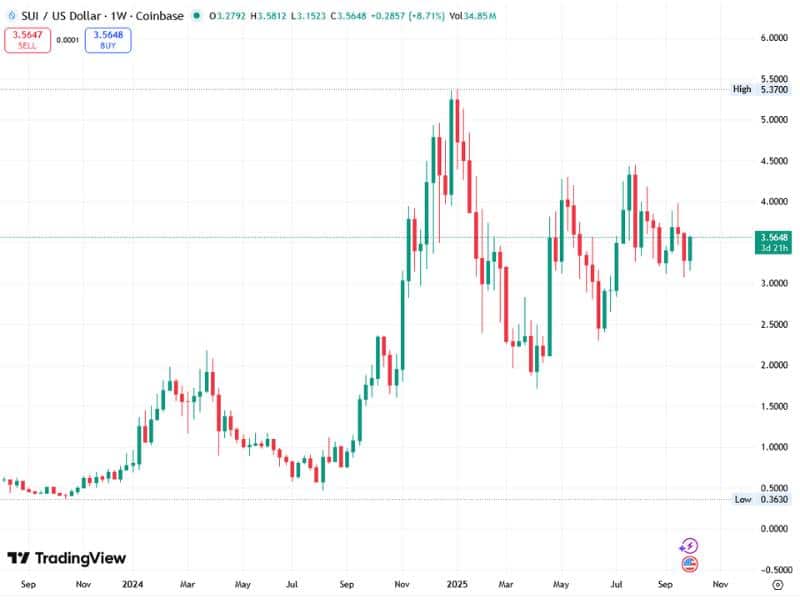Is Sui a Smart Investment?
Sui has become a popular altcoin recently. It's faced challenges like competition, inflation, and many new tokens. The project seems stable for now. But can Sui maintain this, or are investors taking a risk?

Why Altcoins Struggle
Let's face it: most altcoins don't last. There are a few main reasons for this.
First, early investors and venture capitalists often sell off their holdings over time, which constantly pushes the price down.
Second, new projects pop up every week. This means a ton of new tokens are all fighting for the same money.
Third, the supply of these coins usually increases faster than people want to buy them, which means many coins have a hard time keeping their value.
That's why many altcoins disappear after the initial hype dies down.
But Sui is different. Since it launched, its supply has increased from 500 million to over 3.5 billion in just two years. Even with this increase, the token has managed to keep up with Bitcoin's price. For a coin that increases in supply, that kind of staying power is rare.
What's the Buzz About Sui Token?
Sui token has a fixed supply of 10 billion, and it's turning heads because it's growing quickly.
The total value locked in Sui has skyrocketed, jumping from under $20 million to over $2 billion. That's a massive increase.
Part of the reason is Bluefin, a popular futures exchange built on Sui. Also, more people are trading SUI tokens on Sui's decentralized exchanges every day.
Sui appears to be introducing new concepts to decentralized finance and derivatives. If this trend continues, the platform has the potential for substantial expansion.
Taking a Look at Sui
Sui's market cap is about $13 billion, making it similar to Avalanche (AVAX) and Hyperliquid. It has a good amount of Total Value Locked, and its price looks fair for a big Layer 1 project.
Something to think about:
Sui is moving into derivatives, with futures nearing $2 billion. This looks good, but most of these trades expect the price to go up. When everyone thinks the same way, things can change quickly.
We've seen this happen before: SUI once dropped from $5 to $2 because there was too much leverage. These kinds of changes can be good or bad. Short-term traders might make fast money, but remember that the market can change if you're planning to hold on for a long time.
Sui vs. Bitcoin: Thinking Ahead
Bitcoin's future still looks bright. ETFs and big investors keep buying, and people are holding onto it for the long haul. This makes Bitcoin more scarce and keeps it as crypto's safest bet for storing value.
Sui has some challenges ahead. Ongoing inflation and token releases mean investors take on more risk when trying to grow their wealth. It still fits into the market, just in a different spot.
Sui has carved out a space in Layer 1. It quickly caught on in DeFi and is now a player in derivatives. It may never be as stable as Bitcoin, but it could become known as a higher-risk, higher-reward option in DeFi.
Will Sui Keep Climbing?
Sui's price and user numbers hint that it might continue to grow. The project looks strong, and its expanding network suggests it has staying power.
Still, some challenges could pop up. Issues such as over-borrowing, new coin releases, or strong rivals could push the price in either direction.
Traders can profit from these price swings by betting on price direction. If you're thinking of holding Sui, be aware of the risks. Carefully consider it before adding it to your long-term investments.
Ultimately, Sui's success hinges on whether it grows faster than new coins are created and market sentiment. If Sui gains traction, it could outperform expectations. If not, the risks might be too great.
What You Should Know
Sui is making waves in the altcoin market because it is handling its coin supply well. More people are using its DeFi features, and a rising TVL suggests it's a contender. You should keep an eye on this project. As trading options grow and new tokens pop up, investing wisely is key.
Right now, Sui is a riskier altcoin pick, but it could pay off big.


